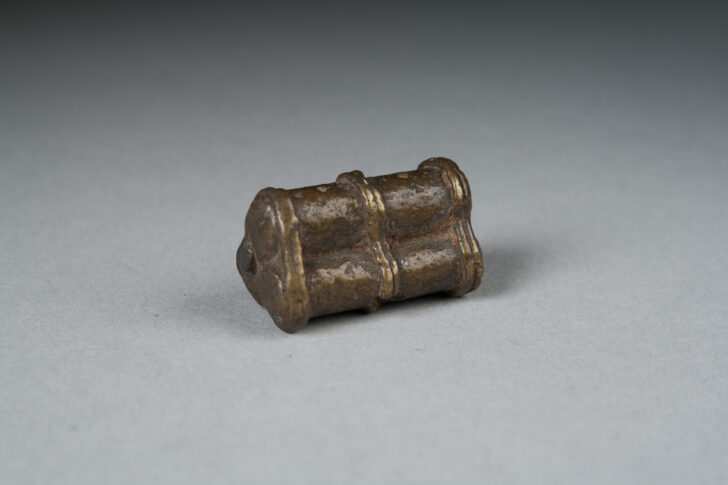Gold-weight
Akan

Description
Subject Matter:
Figurative gold-weight in the form of what may be three European style cannons (apremo in Twi) stacked together (cf. British Museum object number Af1979,01.3708). Weaponry makes up a common category of gold-weights, which indicated the military power and strength of Akan-speaking states (cf. Garrard, Akan Weights and the Gold Trade, 1980, p. 287). European cannons and other firearms were introduced in the 17th century through trade for gold-dust and slaves (cf. Sheales, African Goldweights, 2014) and were sometimes captured and displayed as trophies (cf. McLeod, The Asante, 1981, p. 128). The use of cannons and firearms were also later used in ceremonial contexts for spiritual and physical defense, as the loud explosions were thought to scare evil spirits away (cf. Sheales, African Goldweights, 2014). Some related proverbs state: 'A cannon does not miss game' and 'If you inherit from a white man, you fight with cannons' (cf. British Museum object number Af1979,01.3708).
Physical Description:
Gold-weight in the shape of three cylinders stacked in a triangular form, with a raised line wrapped around the middle and each end.
Usage Rights:
If you are interested in using an image for a publication, please visit https://umma.umich.edu/request-image/ for more information and to fill out the online Image Rights and Reproductions Request Form.